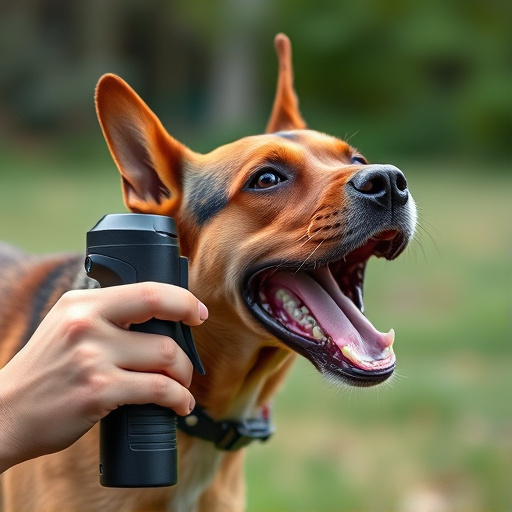- Understanding Dog Attacks and Their Impact
- Introduction to Mace Spray as a Defense Mechanism
- Safety Considerations for Using Mace on Pets
- Application Techniques and Best Practices
- Legal Implications and Alternative Solutions
Understanding Dog Attacks and Their Impact
Dog attacks can be frightening and potentially harmful experiences, with severe physical and emotional impacts on victims. Understanding the nature of these incidents is crucial in developing effective strategies to prevent and manage them. Dog aggression can stem from various factors, including fear, territorial behavior, or inadequate socialization. When a dog perceives a threat, it may react by barking, growling, snarling, or even biting. The intensity of a dog attack can vary greatly, ranging from mild snaps to severe maulings.
In such situations, having a means to quickly neutralize the menace is vital for the safety and well-being of individuals and pets alike. One effective tool that has gained popularity for dog defense is mace spray specifically designed for animal encounters. This non-lethal pepper spray can be used to temporarily disable a dog’s sense of smell and vision, giving the user valuable time to escape or defuse the situation. It’s important to note that when using any type of mace spray on pet skin, proper application techniques and safety precautions should be followed to ensure minimal irritation and maximum effectiveness in neutralizing potential attacks.
Introduction to Mace Spray as a Defense Mechanism
Mace spray, often used for personal protection against humans, has found a new application in defending against dog attacks. This non-lethal self-defense tool can be a game-changer when facing an aggressive canine. It works by neutralizing the animal’s sense of smell and vision temporarily, allowing you to create distance and escape the situation safely. The active ingredient, capsaicin, is derived from chili peppers and is safe for humans but highly effective in deterring dogs.
When using mace spray as a defense against dog attacks, it’s crucial to understand how to apply it properly on your pet’s skin. Pet-specific mace sprays are designed to minimize irritation while maximizing effectiveness. The neutralizing effect lasts for about 15-30 minutes, providing enough time for you and your loved ones to move to safety. Remember, the key is to target the animal’s face—its eyes, nose, and mouth—to ensure a swift response without causing long-term harm.
Safety Considerations for Using Mace on Pets
Using mace as a defense against dog attacks should always be approached with caution and an understanding of safety considerations. When it comes to pets, neutralizing mace spray on their skin is of utmost importance. Pet owners or handlers must ensure that any mace used is specifically designed for animal use, as human-grade mace can cause severe irritation or even poisoning in animals.
The application method should be carefully considered too; always follow the manufacturer’s instructions and aim for the eyes, nose, and mouth of the attacking dog. It’s crucial to practice and prepare, ensuring you’re comfortable with the technique before it’s needed, as adrenaline during an actual attack may affect your ability to use mace accurately and effectively. Safety gear, such as protective clothing, can also minimize the risk of skin irritation or absorption of the spray.
Application Techniques and Best Practices
Legal Implications and Alternative Solutions
Mace spray can be an effective tool to neutralize dog attacks, but its use requires careful consideration and responsible application. By understanding the impact of dog attacks, the benefits and safety aspects of mace, and following best practices, pet owners can ensure their safety while adhering to legal implications. Always prioritize non-lethal options, and consult local laws regarding the use of force against animals. Proper training and preparation are key to using mace effectively without causing harm to pets or others.
